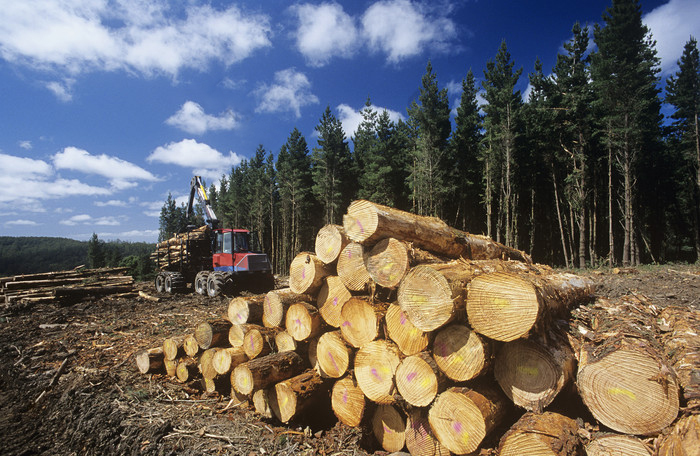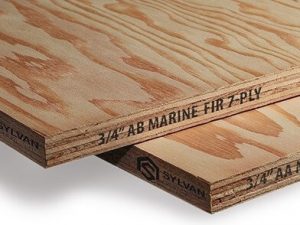Timber inspection is one of the most important links in the production and operation of a lumber yard. Strengthening wood inspection can not only make effective and reasonable use of forest resources, but also improve the quality of wood products and bring good economic benefits to forestry enterprises. This article discusses the main contents of wood inspection work in lumber yards and the significance of wood inspection work, and also puts forward opinions on how to strengthen wood inspection work.
In the past, the main task of the lumber yard was to complete the transportation of wood and transfer the wood to the required units. Therefore, the storage of wood, rational lumber production, and quality management were the responsibilities of the lumber yard. As my country’s economy continues to take off and business development opportunities increase, the product structure of the timber production system is also gradually changing. How to rationally utilize and protect existing forest resources, maximize their benefits, and improve wood utilization is the focus of current research.

1.The significance of wood inspection work
1.1 Timber inspection work runs through the entire process of wood product molding
Timber inspection is one of the indispensable and important links in the production and operation of timber products. Timber inspection work runs through the entire process of timber production and management, from the measurement and design of raw materials to the sales of timber products. Various indicators such as timber output, quality and yield rate all require the support of timber inspection technology. Only through wood inspection can we know the size, volume and material of wood products, and only through wood inspection can we know the raw materials and uses of wood products. It can be said that wood inspection work always runs through the entire process of wood product molding.
1.2 Timber inspection is related to the economic benefits of timber production enterprises
Timber inspection work is directly related to the quality of wood products, lays a good foundation for increasing the selling price of wood, and is related to the direct economic benefits of forestry enterprises. Only by strengthening the management of wood inspection work and carrying out dimensional inspection and volume calculation of wood products can the grade be assessed. The implementation of the production plan of a wood production enterprise, whether the quality of the produced products is qualified, and the accounting of output value and production cost etc, must all go through the quantitative inspection, quality identification and variety differentiation of wood products. Therefore, timber inspection work is not only the focus of timber production and management of timber enterprises, but also a hot spot for improving the economic benefits of forestry enterprises.
1.3 Timber inspection work can reduce the waste and loss of timber resources
With the gradual reduction of our country’s forest area, the recoverable resources of forest trees are also declining. Therefore, our country has strengthened the implementation measures for the protection of natural forest resources and put forward logging quota requirements for timber companies. Eventually, timber production also showed a decreasing trend, and lumber prices are gradually rising. Reasonable and effective use of wood inspection technology to identify the performance and quality of different materials will help reduce the felling of unfinished wood. In addition, we must pay attention to the management of timber inspection and formulate corresponding timber inspection management regulations and management rules, which will help reduce the waste and loss of my country’s timber resources.
2.Main contents and methods of wood inspection work
2.1 Wood inspection of solid wood horizontal panels and walnut boards
The appearance of solid wood horizontal panels and walnut boards requires that the boards be cut with straight grain and no color difference. The four sides of the wood should be kept intact, and no small loose joints are allowed. The moisture content of wood should be controlled at 8%-12%, and a moisture content tester with an error of no more than ±2% can be used for measurement. The length and width deviation of the wood should be ≤±2.0mm; the thickness deviation should be ≤±0.5mm. The horizontal panels and slats should be of the same width (preferably 45mm—80mm), and obvious glue seams are not allowed.
2.2 Inspection of laminated timber
The surface of laminated lumber is required to be free of cracks, knots and insect holes; the surface should be smooth, with no missing wood, and fluffing is not allowed, including fluffing caused by equipment, tool defects or disordered wood texture. The finger joints should be tight and complete, the joints should be uniform, there should be no root splits, and there should be no cracks, gaps at the flat joints. When visually inspecting the entire panel of laminated materials, it is required that there is no warping or deformation. The moisture content of laminated materials is controlled at 8%-12%, and a moisture content tester with an error of no more than ±2% is used to measure it. The length and width dimensional deviation of laminated materials is ≤±2.0mm; the thickness dimensional deviation is ≤±0.5mm. In addition, the bonding strength of laminated timber must meet the requirements of national standards and reach the standards of non-load-bearing wooden parts or components.
2.3 Inspection of melamine boards
The appearance of melamine board requires that the surface is smooth and smooth, without stains, and there must be no bulging, bubbles, warping, etc. The surface layer of the board must be uniform in thickness and free of impurities. Carefully check whether there are any indentations and whether the wood grain is clear is also one of the requirements for a qualified board surface.
3.Strategies to improve the efficiency of wood inspection work
3.1 Strengthen the management of inspection work when lumber is put into storage
When log products are transported to the lumber yard, they must be inspected. Through inspection, the diameter and grade of each log are marked on the cross-section. This is because the logs transported to the lumber yard may have unreasonable defects in the wood. If there is a problem, timber inspections must be carried out in a timely manner to reduce the loss of benefits. Based on the company’s resource conditions and market feedback information, we can insist on conducting root-by-root review of the logs to ensure that they are checked at all levels. In order to make rational use of my country’s limited forest resources and maximize their economic and utilization value, we must effectively strengthen the inspection of timber at the source and strengthen the management of timber when it is put into storage.
3.2 Timber inspection work must be implemented in place
To strengthen the basic work of timber inspection in mountain farms, we must adhere to the principle of implementation. That is to say, the lumber output value indicators of the contracting work group must be implemented, and the responsibilities of the contract measurers and acceptance inspectors must also be implemented. It is necessary to have a dedicated person responsible for inspection of each process. For the material-making operations in the mountain yard, the process of measuring the material after the material is made must be implemented. The acceptance inspector must record the acceptance data of each process in a book to make the acceptance data of each process clear and accurate. Detailed inspection will help analyze production and operation activities, and can promptly discover problems in the mountainous materials making, and finally achieve the purpose of directing production. It is necessary to improve the professional and technical level of timber inspectors and material measurers and stabilize the timber inspection team.
3.3 Give full play to the role of supervision and inspection departments to ensure the accuracy of inspections
Supervision and inspection departments should adopt the principle of fairness and justice, serve as a bridge between the forest farm on the mountain and the lumber yard at the foot of the mountain, coordinate the relationship between the forest farm and the lumber yard, and play the role of a balance. It is necessary to deepen law enforcement officers’ understanding of inspection responsibilities, enhance their legal concepts, and form a capable, efficient, and pragmatic timber inspection team. Timber inspectors in the supervision and inspection department must strictly implement the rules and regulations, work in accordance with the rules and regulations, and act in accordance with the rules and regulations. Put an end to shirk and irresponsibility in inspection work.

